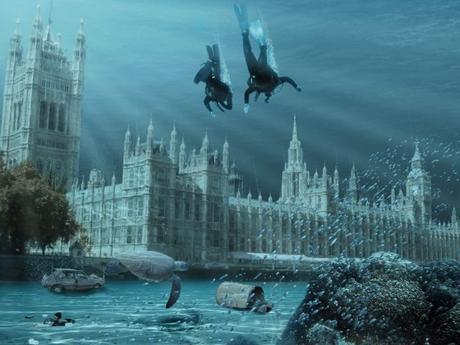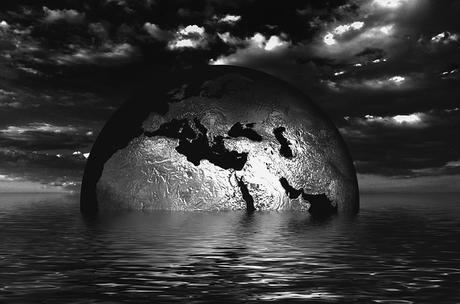What is Global Warming?
Anywhere you go it is not uncommon to hear people discussing climate change or global warming. In many cases, the two are considered to be basically the same thing. Though the two are related, global warming is the cause of climate change.
Global warming is precisely what the name implies, it is the steady increase in the Earth’s temperature. Studies show that since the year 1880, the average temperature of the Earth has risen over 0.85˚ Celsius. In fact, December 2015 became the first month in history to ever reach a temperature of 2˚ Fahrenheit above normal for the planet.

According to Climate Hot Map,
“Global warming is primarily a problem of too much carbon dioxide (CO2) in the atmosphere—which acts as a blanket, trapping heat and warming the planet. As we burn fossil fuels like coal, oil and natural gas for energy or cut down and burn forests to create pastures and plantations, carbon accumulates and overloads our atmosphere. Certain waste management and agricultural practices aggravate the problem by releasing other potent global warming gases, such as methane and nitrous oxide.”
Some of the major causes of these increases in global temperature include:
- Greenhouse Gases – The Earth’s atmosphere is made up of natural greenhouse gases that maintain the livable temperature we all so enjoy. Without these gases in the atmosphere, Earth would be below the freezing temperature of water. The major contributing gases to our atmosphere are carbon dioxide, water vapor, ozone, and methane. Due to growing technological advances and human activity since the industrial revolution, the amount of carbon dioxide and other gases has increased by over thirty-five percent. This has been a major contributor to the planet’s growing temperature.
- Aerosols – The effect of aerosols (which are man-made and natural volcanic liquid and solid pollutants) in the atmosphere has been observed since 1961. Studies have found that these hazardous materials have a cooling effect on the planet, this happens because the increase the reflection of incoming sunlight.
- Soot – Can either heat or cool the planet depending on how it is deposited. Atmospheric soot acts almost like a blanket, absorbing radiation from the sun and keeping the temperature on Earth’s surface cool. When soot is deposited on the Earth’s surface, studies show it will heat up the average temperature.
- Changes in Earth’s Orbit – Over tens of thousands of years the orbit of the Earth around the sun as well as the tilt of its access change. This a natural cause of warming due to the change in climate. It is predicted that this may cause the Earth to experience a glacial period in the next 50,000 years.
- Solar Variation – Despite what many people believe, studies have shown that the sun has not increased the Earth’s temperature due to variances in radiation at all.
What is Climate Change?
Climate change is a product of many natural environmental, and man-made causes (such as global warming). It refers to the change in weather patterns that last for an extended amount of time. Plate tectonics, solar radiation, and volcanic eruption have attributed to the changes in Earth’s climate since the beginning of time.
According to TakePart,
“Climate change, also called global warming, refers to the rise in average surface temperatures on Earth. An overwhelming scientific consensus maintains that climate change is due primarily to the human use of fossil fuels, which releases carbon dioxide and other greenhouse gases into the air. The gases trap heat within the atmosphere, which can have a range of effects on ecosystems, including rising sea levels, severe weather events, and droughts that render landscapes more susceptible to wildfires.”
There is physical evidence of climate change all over the world and include:
- Historical – There is evidence throughout history of climate change. Through ancient agricultural studies, written, and oral history, climate change has been linked to the collapse of multiple civilizations.
- Glaciers – These are one of the biggest indicators of climate change and global warming. As the Earth’s temperature increases and less snowfall occurs at glacial locations, the world has experienced a significant rise in glacial shrinkage. This causes an increase in sea-levels and reduction in polar ice cover, both of which can cause extreme climate change.
- Vegetation – Examining the Earth’s plant life is a good indicator for climate change. Many plants can only grow in certain areas due to their need for specific climates. It is not uncommon during climate change times to see plants flourish, move locations, or become extinct completely. Studies show that 300 million years ago such a change occurred causing many plant and species to go extinct.
- Pollen – Like vegetation, changes in the type and area of pollen can be good evidence for climate change. Different plants have different types of pollen. When unusual pollen begins showing up in lakes and surfaces it is typically a sign of climate change.
- Precipitation – During the twentieth century, Earth experienced a two percent increase in precipitation. Changes in precipitation cause rises in sea-level as well as introducing more water vapor into our atmosphere.
- Ice Cores – Scientists have been using drills to reach the center of ice sheets to obtain information concerning climate change from the distant past. Evidence from ice cores can include a look into the rise and fall of sea levels, as well as what the carbon dioxide emission level was by analyzing air bubbles in the ice. This technique for studying the environment of the past is crucial for understanding what kind of climate change we may be able to expect in the future.
- Animals – Changes in animals over the ages can show us how climates have changed by how they have had to adapt. Especially in fish, it has been easy to find evidence of changes in climate due to the changes in species as water temperature increased and decreased.
- Sea-level – The rise and fall in sea-level has been a great indicator of the effects of climate change on the Earth. Scientist use methods like studying marine limestones, coral reefs, coastal sediments, and archeological remains to better understand climate change on Earth.

Solutions To Global Climate Change
Though there are many natural causes of global warming and climate change, human interaction can help slow the negative impacts to our atmosphere. Things like recycling (one of the biggest contenders in the fight against global warming) are very easy habits for people to pick-up that can help the Earth in a major way.
- When buying new appliances, try and look for ones that are energy efficient.
- Don’t leave appliances on, when not using something (like the TV for example) be sure to turn it completely off. By not leaving appliances on people can conserve up to forty percent more energy.
- Using pot covers when cooking food can save tons of energy needed to cook the dish. More than seventy percent of energy can be saved by using appliances like pressure cookers and steamers.
- Showering can save up to four times the amount of energy as running a bath can, not to mention use much less water.
- Only run the washing machine and dishwasher when they are full. Many people only load up these appliances half-way before running them, leading them to use twice as much energy.
- Instead of using a dryer, try a clothesline when possible. Air drying clothing for six months out of the year can save up to 700 pounds of carbon dioxide output.
- Buy reusable shopping bags. Making plastic shopping bags pollutes groundwater, soil, and air, and releases methane gas and carbon dioxide into the atmosphere which contributes to global warming.
- Buy local foods when possible. By buying from local food producer’s people not only experience a better quality meal and support local businesses, it saves fuel needed to transport food from farms much further away.
- Commuting by bicycle, foot, or public transportation is a great way to cut down on dangerous atmospheric emissions.
- If the opportunity is available, try telecommuting from your home for work.
- Help educate friends, family, and co-workers. Many people do not mean to help global warming, they simply don’t know they are doing anything wrong. Lead by example and point out ways others can help.
- Get involved in organizations that help prevent global warming. There are tons of people out there who want to fight global warming and help our planet. A quick Google search will show plenty of groups to join.
Global warming and climate change are important for everyone to understand. The more we hurt our planet’s atmosphere, the more we put ourselves in jeopardy of global disaster. So remember the next time you go to grab that extra shopping bag or leave the television on, that every little bit of energy saved makes a difference.

